Facial cleansing: varieties and technology
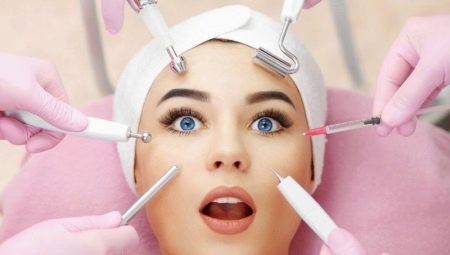
Today, residents of both large metropolitan areas and small industrial towns have to pay special attention to the condition of their skin. City dust and exhaust fumes, toxins and daily make-up - all this gradually accumulates in the pores, preventing the face from "breathing", and leads to the appearance of various micro-inflammations and blackheads. Cleansing is one of the most important procedures in the complex of face and body skin care. However, regular daily washing cannot solve these problems; more drastic measures are required, for example, cleansing the face.

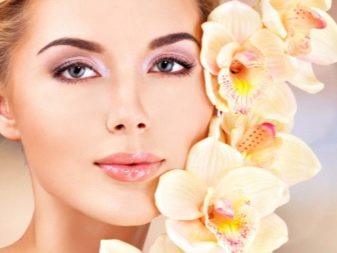
What it is?
The condition of the skin largely depends on both the internal state of the body and external influences.
Many factors negatively affect its appearance and health.
- Stress. During stress, the body changes the functioning of the immune, vascular, endocrine and nervous systems, which can lead to various rashes on the face and body. Weakened immunity will not be able to cope with various allergic reactions and chronic dermatoses.
- Lack of sleep. Systematic sleep deprivation is fraught with not only the appearance of deep wrinkles and circles under the eyes. Lack of restful sleep for 7-9 hours every day leads to thinning of the skin and the appearance of a gray, earthy hue within a few days. Before going to an appointment with a beautician, it is necessary to normalize sleep patterns so that the procedure is not wasted.
- Various gases, dirt and dust penetrating the pores. Even in nature, the skin is exposed to various harmful substances, and even in gas-polluted cities with myriads of dust particles flying in every office space, by the end of the day the skin is covered with a real dust mask. This blockage of pores leads to the appearance of blackheads, various inflammations and allergies. Subcutaneous inflammations appear, which are not recommended to be opened on their own.
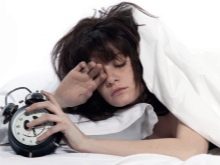

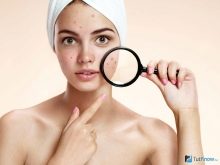
- Bad habits. Cigarette smoke, cocktails with alcohol, light "high" - all this does not immediately reflect on the skin and has a cumulative effect. But not only cigarettes, alcohol and drugs undermine health and lead to great problems of the external and internal state of the human body, but also various habits. For example, the habit of going to bed with makeup on, the habit of touching your face with unwashed hands, or the habit of drinking a few cups of coffee a day, which is very drying to the skin. Cleansing will not eliminate problems for life, if beautiful and healthy skin is a priority, you will have to reconsider your lifestyle.
- Improper nutrition. The condition of the skin is a reflection of the internal processes of the body. Excess weight or a sore stomach is a guaranteed appearance of various rashes and redness of the upper layer of the epidermis. Eating a variety of fast food and carbonated drinks with a high sugar content leads to sebaceous blockages and subcutaneous inflammation.

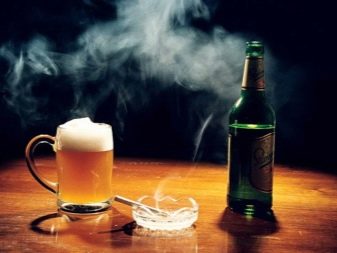
In order to cope with all these influences, the skin forms a light film on its surface that cannot be seen with the naked eye. Failures during stress or illness, the influence of cigarette smoke or exhaust gases can disrupt the integrity of such a film, as a result of its damage microinflammation is formed. You can cope with such a problem both at home, although it is quite difficult, or with the help of professionals from the salon.
A specialist will help you choose the required type of procedure based on the current state of the skin, and the procedure itself will saturate the skin with nutrients and oxygen.
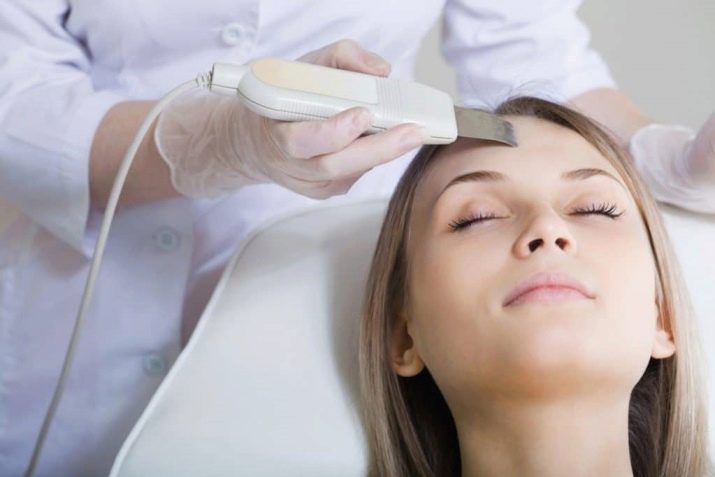
Carrying out facial cleansing in a salon has both advantages and disadvantages.
Of the advantages, the following can be distinguished.
- Ease of planning. A cosmetologist, even with little experience, will be able to assess the condition of the skin and draw up a certain schedule of necessary procedures. Their frequency depends not only on the amount of inflammation and skin elasticity, but also on its type. For owners of oily skin, such procedures can be performed once every three weeks or even once a month. Normal skin needs less frequent cleaning: once every 1-2 months will be enough. Salon procedures are not recommended for women with very dry skin and for women of the age; home care is enough.
- The procedure is painless. Unlike manual cleaning using various hard scrubs and brushes, hardware cleaning practically eliminates microdamage. Depending on the individual characteristics, the client may experience not very pleasant sensations, or may not feel anything at all, but there will definitely be no pain. Home procedures can cause injuries and microscars that remain on the face after excessive pressure on the skin.
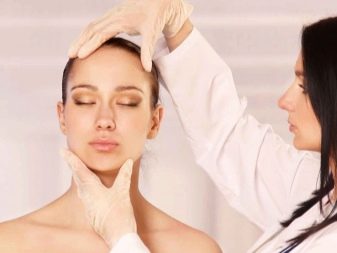
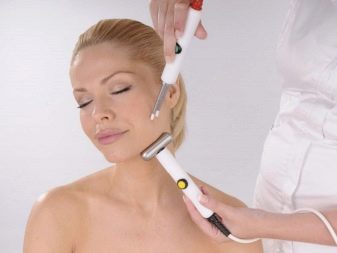
- Low cost. Today, hardware cosmetology is no longer the privilege of foreign stars. In any small town you can find several salons offering facial cleansing among their services. The average price tag for one procedure is from 2,000 to 3,000 rubles. Depending on how often you need to do the procedure, you can calculate the approximate monthly cost. Deep cleansing is more expensive, but it lasts from one to several months, which will also help to save money.
- Wide choose.The existence of a large number of different procedures allows you to choose exactly the method that will give the ideal result for each individual case. The selection of the procedure is carried out depending on the type and condition of the skin, gender, age, weight and the presence or absence of contraindications. A classy specialist will never prescribe a chemical peel for sensitive skin or vacuum cleansing for a patient with diseased vessels.

Unfortunately, the effect of such a difficult procedure does not always coincide with the expectation, As with any cosmetic procedure, hardware facial cleansing has its drawbacks.
- An impressive list of contraindications. This procedure is prohibited for women during pregnancy and suffering from various dermatological diseases. The procedure is not recommended for minors, people with reduced immunity and with individual drug intolerance. For some time before the procedure itself, visits to the baths and the use of cosmetics are limited.
- Long-term recovery. After aggressive peeling, unaesthetic red spots may appear on the face, and the face may completely take on a purple hue. In severe cases, slight inflammation may appear. It is advisable to protect the skin from any influences for at least 5-7 days after the procedure. You should not plan important meetings and events for this period, it is best to stay at home for a while.
A great time to do salon cleaning is on vacation or long holidays. But it is important to carry out the procedure not on the eve of the celebration, but after it.
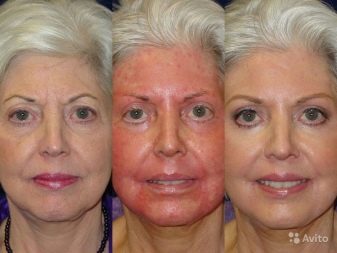

- Unpredictable result. It does not help in one procedure, but it may not help at all. In one case, the master may turn out to be a non-professional, in the other, the individual characteristics of the patient will affect. Cleaning will not get rid of old marks left from acne, and will not clear deep dirt in one procedure. If your lifestyle includes the use of various harmful substances, constant stress and lack of sleep, then even regular procedures will not help restore your skin to a healthy and blooming appearance.

Views
With the development of science and medicine, technologies in the field of cosmetic care have leaped forward. Various methods of cleansing the face allow you to find a solution to the problems of any patient on an individual basis, choosing this particular procedure that suits him specifically. Depending on the method of exposure to the skin, manipulations are of the following types.
Mechanical impact
One of the simplest and most popular facial cleansing methods, which is most often used independently at home. The essence of such hygienic cleaning is that the pimple is squeezed out from the surface of the skin, and the inflamed area is then disinfected. Pressure on the skin is carried out both with the help of special devices, and with the usual corner of a napkin or with fingertips.
In order to avoid infections and scars, it is better not to do this cleaning yourself, but to trust the professionals. The specialist works with gloves and thoroughly sterilizes all devices. The premises are cleaned daily, there are no animals or plants. The surface of the face is disinfected with a special agent, and the pressure on the skin is carried out with a certain instrument that will not injure or scratch it. After the procedure, the beautician will apply nourishing and soothing creams to the patient's face, which will reduce the recovery time significantly.
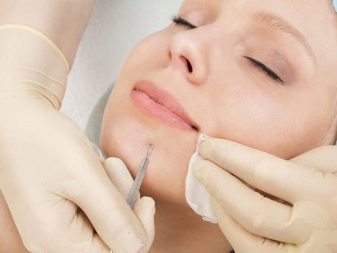
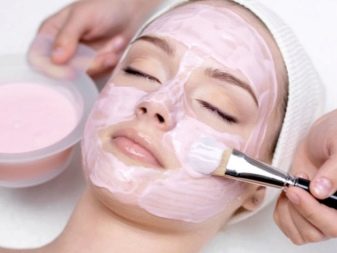
One of the newest services in modern cosmetology is such a type of mechanical action as diamond peeling. The skin is sanded with a special tool covered with diamond dust. This allows you to remove only the top dead layer of cells without touching healthy areas of the skin.
Mechanical cleaning is often used in conjunction with such peeling, since it alone is unable to remove subcutaneous pimples and comedones.
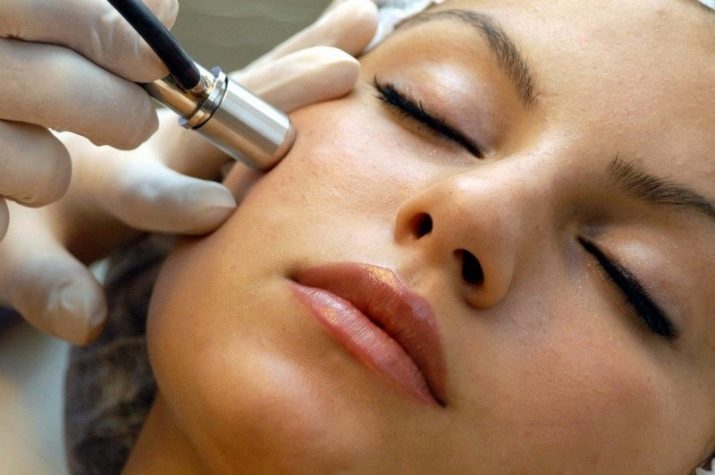
Vacuum impact
This method can cleanse the skin only from surface impurities and acne without inflammation. Vacuum cleaning gently affects the epidermis, evens and refreshes the complexion, but is not intended to deal with serious problems. It is a painless procedure without unpleasant consequences, but it is not recommended for hypersensitive and dry skin. The device, as it were, “sucks in” a section of the skin, pulling out impurities and sebaceous plugs from it.
Such cleaning can be done at home by purchasing a special device that is sold in many online stores.

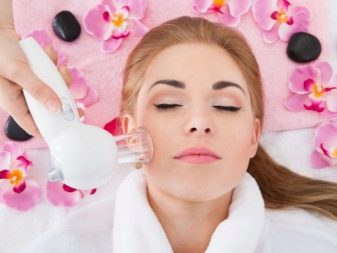
Ultrasonic exposure
Such cleaning requires a special apparatus that emits ultrasound waves. It heats up damaged areas of the skin and increases the rate of regeneration of new cells instead of dead ones. The method is great for removing blackheads and narrowing pores, as well as preventing their early appearance. The face after the procedure looks refreshed and healthy.
The only drawback of this procedure is its high cost, starting at 4000 rubles. and higher.
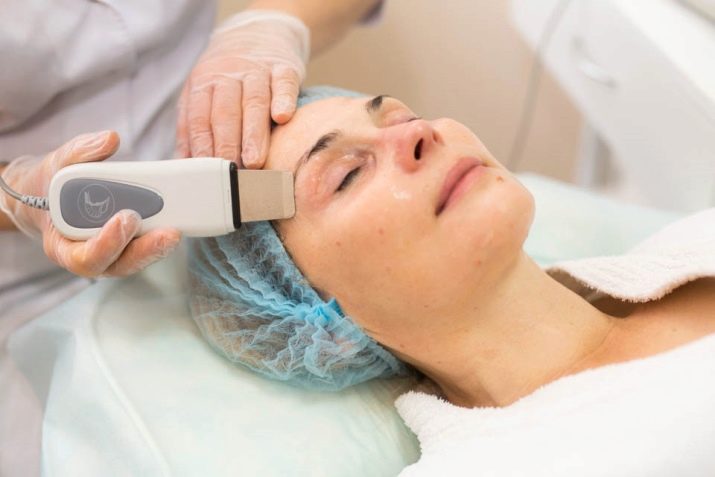
Laser exposure
The technique is based on the use of a laser beam that destroys the dead skin and removes contamination. The specialist runs a nozzle over the face, which affects the area of the skin with flashes of a certain frequency, which is set depending on the condition of the skin. The face after such cleansing looks younger and more rested. In addition to the cleansing effect, this action helps to cope with the problem of unwanted facial hair.
Such cleaning very deeply and strongly affects the skin, therefore it imposes certain restrictions on the recovery period. Long walks, sudden temperature changes and direct sunlight are not recommended.
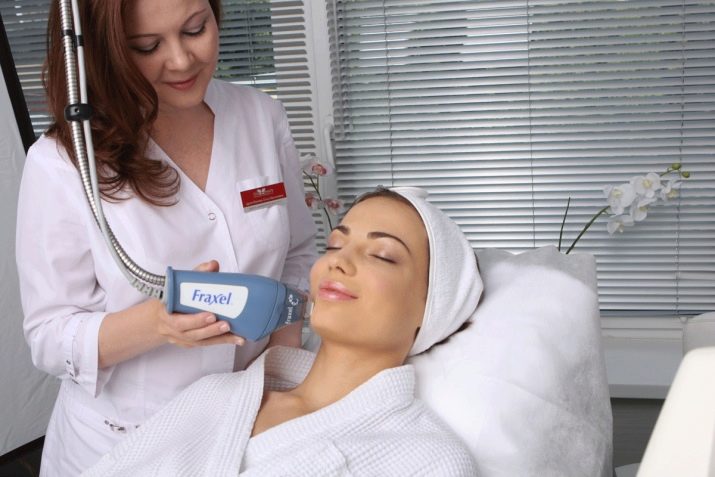
Chemical attack
Facial cleansing is carried out with a special agent, which contains aggressive acids. They eat away at the top layer of fat and dead cells, allowing inflammation to be removed along with them. It is strongly not recommended to carry out such a procedure on your own, as this can lead to severe burns and even scars. At the same time, the procedure performed by a beautician in the salon will help remove even shallow wrinkles and scars from old pimples.
Fruit peeling is one of the types of dry face cleaning. The acid contained in apples or lemons gently removes dead skin and gives a lifting effect. In addition to fruits, for a chemical effect on the epidermis, you can use not only fruits and vegetables, but also fermented milk products, wines and even the secretion of special snails that eat grape leaves. Such snails not only secrete acid, but also massage various parts of the face, crawling from place to place.
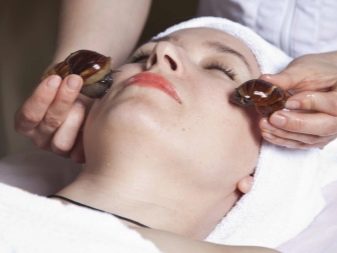
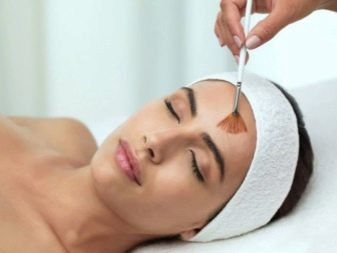
Galvanic action (disinfection)
Disinfection is an effect on the skin using a current whose strength is only 0.6-1.5 mA. Before starting the procedure, it is necessary to cleanse the skin with special acid-containing products that dissolve the protective fatty coating and allow the current to affect the deep layers of the epidermis. Such procedures should be carried out only by a specialist and only after a preliminary examination.
The method guarantees complete cleansing and getting rid of not only acne and blackheads, but even seborrhea and allergic peeling.
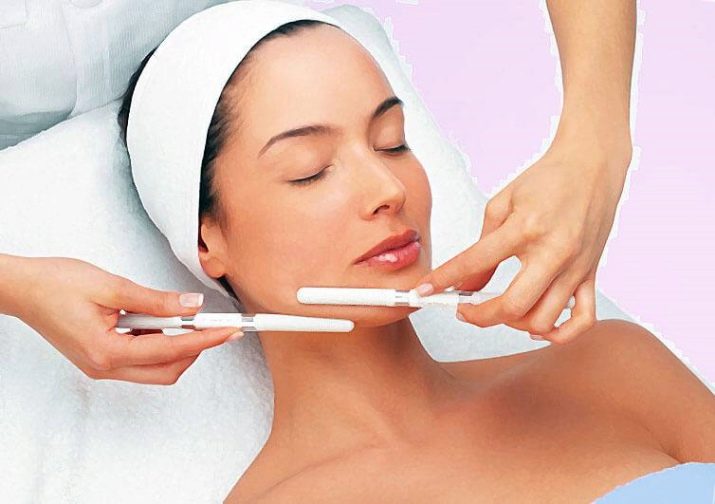
"Brossage"
One of the novelties in cosmetology is a procedure called "brassage". It is carried out using a special device, the attachments of which remove the stratum corneum of the skin, while simultaneously performing massage. At its end, the nozzle has a small hard-bristled brush that spins quickly clockwise or counterclockwise. The circular rotation of the nozzles helps to narrow pores, reduce age spots and reduce inflammation.Additionally, you can apply a scrub with very small particles to your face, it will help deeply cleanse and moisturize even the deepest pores.
In stores, you can purchase a smaller version of the device for home use, but experts do not recommend carrying out such complex manipulations at home.
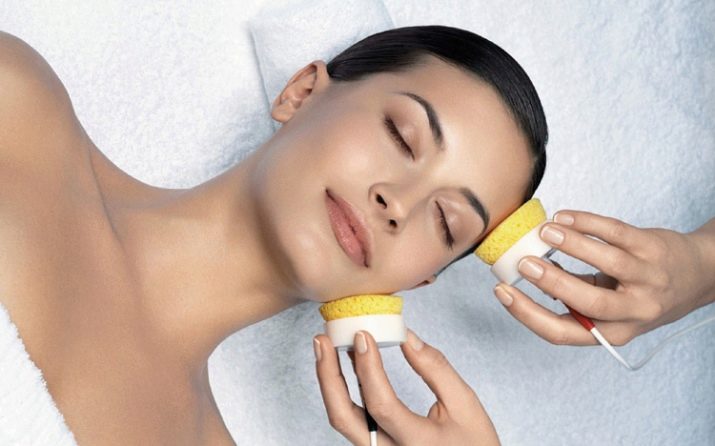
Cryo peeling
Cleaning is carried out with liquid nitrogen, which not only cleanses, but also heals the skin, narrows blood vessels and pores. Nitrogen itself in the form of a liquid has neither color nor smell and reaches a temperature of -195 degrees. Cryo peeling visibly brightens the skin and reduces age spots. With prolonged exposure, it can cause death and death of inflamed cells, and with short-term exposure, it causes narrowing and subsequent expansion of pores and microcapillaries.
It is advisable to carry out the procedure in the autumn-winter period, since after it it is not recommended to stay in direct sunlight for a while and use sunscreen.
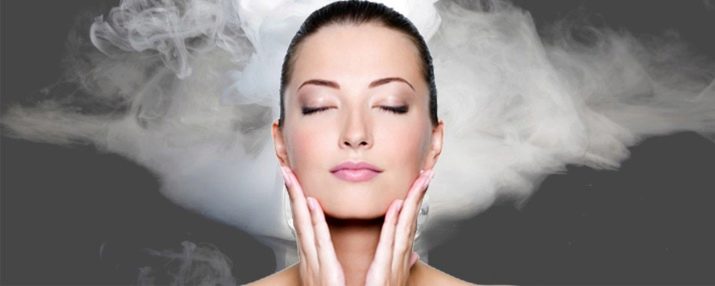
Indications
There are certain skin problems in the presence of which you can safely start looking for the site of the nearest cosmetology.
- Acne in various stages of onset and healing, as well as scars from past rashes. Frequent rash of pimples on the face both during menstruation and during their absence.
- Comedones, which appear as a result of blockage of the hair follicle orifice due to dirt and ingrown hairs. Often this procedure is also offered for men who, due to daily shaving, are more prone to comedones.
- Increased sebum secretion of the skin, manifested by an oily sheen and a feeling of an oily film on the face. Its excess accumulates in the enlarged pores and is compressed into a real plug, which prevents the skin from receiving oxygen.
- Enlarged pores and blackheads resulting from contamination of these pores.
- Dullness and wilting of the skin, an earthy complexion.
- Decreased skin turgor. Turgor is the tone of the skin, its internal pressure and the tension of the membranes.
The last two points signal not only the poor condition of the skin, but also poor health in general. It is necessary to give up bad habits, undergo a medical examination and, if necessary, undergo treatment.
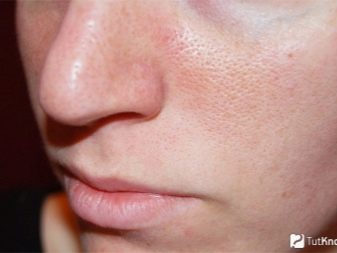

Contraindications
Even if all indications for the procedure are available, there is a list of contraindications that will make it impossible to carry out it.
- The procedure is not recommended for pregnant women and women who are breastfeeding. Chemically active substances, getting on the skin and into the blood, can harm the fetus or newborn baby who uses breast milk. But also, according to the reviews of clients of cosmetology clinics, some women may have increased skin sensitivity during menstruation, which can increase the period of skin recovery after the procedure.
- It is forbidden to carry out cosmetic procedures for epilepsy and severe mental disorders in order to avoid the provocation of seizures. Children under 14 years of age are strongly advised not to perform hardware facial cleansing; daily hygiene procedures are sufficient. Young skin has thinner protection, so the child can get a chemical burn or mechanical injury to the face.
- Hardware facial cleansing is not recommended for people with diabetes mellitus, severe hypertension and bronchial diseases. Various effects of cold, current and chemical compounds can intensify the course of the disease. And also it is worth considering the necessity of the procedure for acute colds and exacerbations of various inflammations.
- Herpes, psoriasis and eczema should first be cured, and then the consequences should be eliminated with the help of cosmetology.
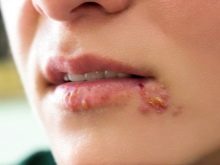

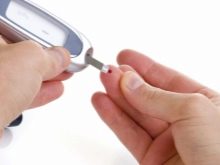
Separately, it should be noted that there are special contraindications for manual face cleansing:
- hypertension;
- any lung disease;
- hypersensitive or very dry skin;
- high fragility of blood vessels.
In addition, cosmetologists recommend dwelling only on gentle methods of exposure to the skin during periods of extreme summer heat or winter cold. It is not recommended to carry out the procedure before visiting climatic zones different in atmospheric pressure and humidity from the usual.
Of course, you shouldn't do a deep cleaning before important events or work meetings, job interviews and dates.

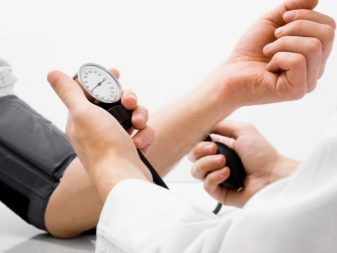
Preparation
Since cleansing your face is stressful for your skin, you need to properly prepare it.
Preparation at home includes three stages and takes quite a long time.
- Pre-cleaning. Make-up, dust and dirt must be removed. To do this, you can use a variety of tonics and lotions, as well as regular soap. Some people prefer to wash off shadows and pencils with a soft sponge or washcloth, others use special make-up remover wipes. One of the newest face cleansers is micellar water. It does not require rinsing and maintains the hydrolipidic balance.
- At the second stage, it is necessary to remove the upper layer of the epidermis, which consists of "dead" cells. To do this, you can use any scrub from the store or prepared by yourself. A coffee scrub or a sea salt scrub will cleanse your skin well. A softer cleaning can be achieved with a berry scrub or a stiff washcloth. The harder and coarser the particles in the mixture, the stronger the exfoliation will be.
At this stage, it is important not to overdo it, if irritation or redness appears during cleaning, you should refuse to proceed to the next stage.

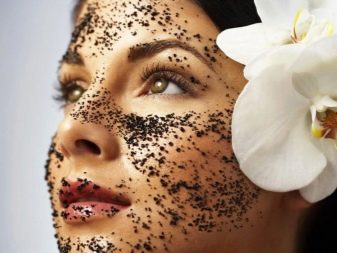
- The third stage is steaming the face to cleanse the pores. This is done using a steam bath to which you can add various soothing and antibacterial oils and herbs. Pour boiling water into a deep bowl and let it cool slightly for a couple of minutes. The steam should be noticeably hot, but not scalding the nasopharynx and facial skin. Once the steam has cooled to the desired temperature, you can add the required ingredients and bend over the steam, covering your head with a large towel or blanket. The procedure lasts about 10-15 minutes, after which you need to start without wasting time on the mechanical cleaning itself. If during the time while the skin is steamed, cleaning has failed, you can repeat the third stage, reheating the water.
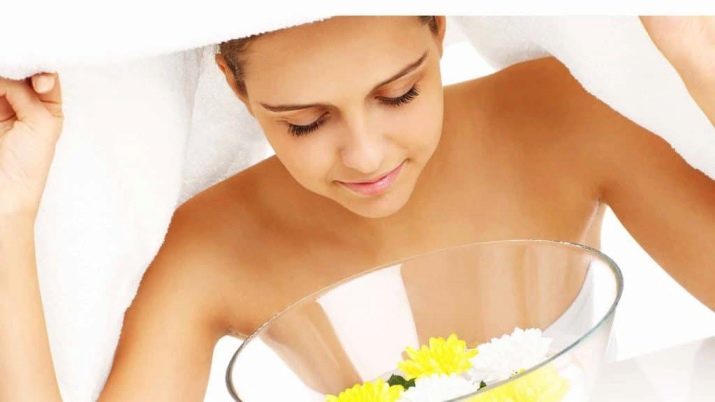
Skin preparation for salon cleaning is included in the cost of the procedure and is performed by the beautician himself. The client or client does not need to pre-steam the face at home and even remove makeup.
To consolidate the effect of the salon procedure, you can start daily pre-preparation yourself in 2-3 days.
- Before doing anything with the client's skin, a specialist must disinfect all instruments and attachments for devices. After disinfection, the beautician thoroughly washes his hands and puts on disposable hygienic gloves.
- The first step is also make-up removal and cleaning the skin from dirt and dust using a special gel or cream that dissolves the remnants of mascara, foundation and other cosmetics. Additionally, you can apply a cleansing mask to your face.
- The top layer of dead cells is removed with peeling or light acid applied to the face for just a couple of minutes.
- The third stage is the expansion of the pores either with hot steam or with the help of a steaming gel. This gel, when applied to the face, reacts with the skin and heats it, expanding the pores. But also the choice can be expanded with various water compresses and masks. And in case of rosacea, salons offer an additional service - hydrogenation with a cold liquid.
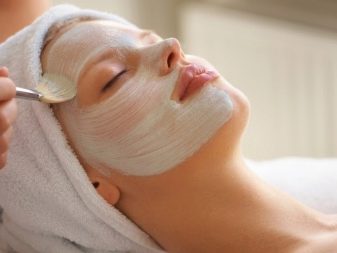
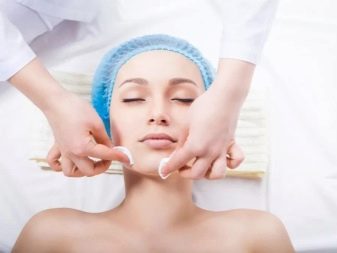
In general, there is no big difference between home and salon training. The latter is carried out faster and more thoroughly due to the use of professional equipment and auxiliary cosmetic compositions.
How to do it?
After steaming the skin under the coverlet, you can proceed to direct face cleansing. Mechanical cleaning is performed with clean hands or tools treated with peroxide or alcohol. Brushing is done with gentle, light strokes with your fingertips. Do not put too much pressure on the steamed face or pick it with your nails, this can lead to visible scars.
Chemical cleansing at home is carried out using purchased products or compositions prepared by hand. You can mix masks made of flour with soda, masks made of clay, activated carbon and succinic acid - the main thing is to choose exactly those components that are suitable for the type of skin. All facial cleansing at home should not exceed 15-20 minutes in time, since after that the skin will already cool down and the pores will close.
It is very important to know that such home procedures are only suitable for owners of oily and normal skin. Dry skin should only be cleaned by a specialist.

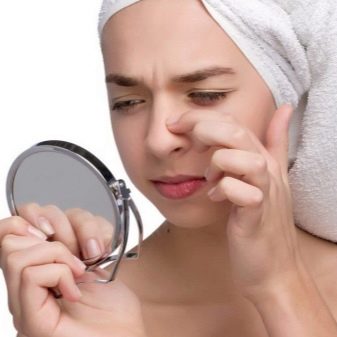
Salon cleaning can vary significantly depending on the type of cleaning.
- Vacuum galvanic. With such a cleaning, the face is first treated with a device that acts on the deep layers of the epidermis with a low-frequency current. This will allow the pores to open more and make it easier for the sebaceous plugs to come out. After the current, the face is treated with a vacuum attachment, which will draw in all the dirt, while simultaneously massaging the skin and reducing wrinkles. Further, all dead cells are removed by chemical peeling and a greasy nourishing mask is applied, which will soothe the skin and prevent inflammation. Both peeling and mask should be selected depending on the skin type and individual allergies. After the procedure, a skin-tightening cream or powder can be applied to the face.
- Mechanical. Mechanical cleaning begins with the treatment of the face with alcohol-free lotion or hydrogen peroxide, after which all closed comedones are gently pierced with a Vidal needle. After that, the other end of the needle, on which the loop is located, is applied to the skin so that the comedone is in the hole. The beautician presses a loop on the skin and squeezes out the sebaceous plug, which can be liquid or thick, outward. The cleaned area is treated with any antiseptic: alcohol, peroxide or miramistin. Instead of the Vidal loop, a Uno spoon or special tweezers can be used. After the procedure, a mask with anti-inflammatory and soothing effect is applied to the face.

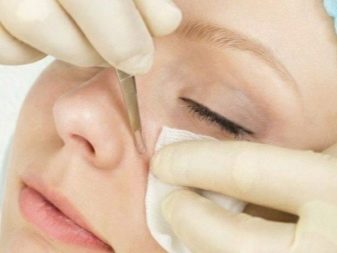
- Chemical. The chemical cleaning session begins with a light peeling, for which a mask containing fruit acid is applied. After rinsing, the procedure is repeated, but using a more concentrated acid solution. This is done in order to first remove the keratinized skin, and then remove the sebaceous plugs. After acidic - an enzymatic peeling from protein serum is applied to the face, which cleanses the deep layers of the epidermis. The next step is to disinfect the face with herbal lotion, which forms a thin protective film on the skin. A soothing mask or cream is applied on top to tighten pores and prevent inflammation.
- Laser. The beautician and patient wear protective glasses, after which the laser is tuned to the desired frequency. The device runs on the skin for about 20-30 minutes, removing all impurities and dead tissue particles. There is no pain during the procedure, and the effect of its implementation is enough for several months. At the end of the cleansing, a moisturizing and nourishing cream is applied to the face.
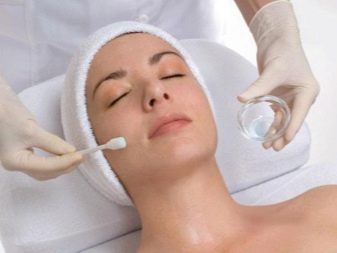
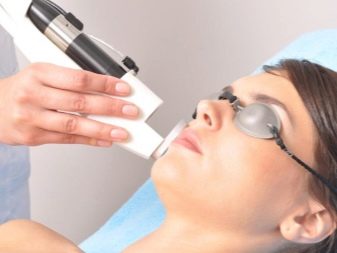
- Ultrasonic. A special mineral water gel or tonic is applied to the face, after which the skin is treated with a device that emits ultrasound waves. Additionally, the skin is massaged with a special nozzle, which allows the skin to receive additional oxygen saturation. Owners of oily skin will need 2-3 sessions per month, and for dry and normal skin, one is enough.After the procedure, a soothing and nourishing mask should be applied to the face.

Follow-up care
Regardless of whether the facial cleansing was carried out at home or using salon machines, the skin will need special follow-up care. The stronger and deeper the effect on the epidermis was, the longer and more careful the subsequent care of it should be. After mechanical or ultrasonic cleaning, you must not apply scrubs to your face for at least a week and do not rub it with various brushes. It is best to avoid long walks in the open air for a couple of days, so it is best to do such procedures on weekends or on vacation. It is forbidden to go to the pool and sauna for at least a week so that high temperatures and chlorinated water do not cause an allergic reaction. After laser and vacuum cleaning, it is not recommended to use sunscreen or tanning creams for several days. The first week is strictly prohibited from visiting the solarium. A strong dry cleaning increases all of the above restrictions at least twice.
After any type of salon procedure, it is recommended to change the hygiene procedures. For washing, it is best to use mineral or melt water. Nourishing and moisturizing masks with a light effect, purchased at the store or prepared on your own, are an excellent solution.
It is best if the mask is advised by the beautician who performed the procedure itself.
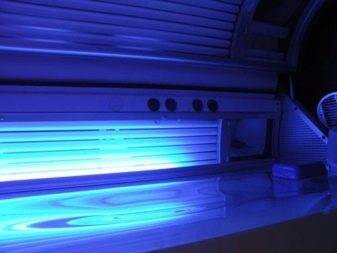
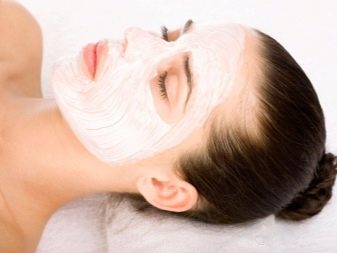
Advice
A qualified salon specialist will help you choose and carry out any cleaning, select the right products and draw up a schedule of procedures. The high price of services does not always guarantee high quality, but more often the professionals are expensive. It is best to choose “your” doctor not based on reviews on the Internet, which are easy to fabricate, but based on the real experience of friends and acquaintances. If the first procedure inspires concern, it is worth stopping at a cheaper and easier cleaning to ensure the professionalism of the staff.
Those who decide to abandon hardware cleansing and prefer to carry out procedures with their own hands need not only time and patience, but also minimal knowledge about the effects of certain products on the skin. As effective as the mask is, according to a colleague or sister, you shouldn't buy it on the same day. First, you need to study the composition and properties in order to understand whether it is suitable for a certain age or skin type.
It is also very important to know the substances that may or have already caused an allergic reaction. If any of them occurs for the first time, it is best to test the product on a small hidden area of the skin, rather than apply it all over the face at once.

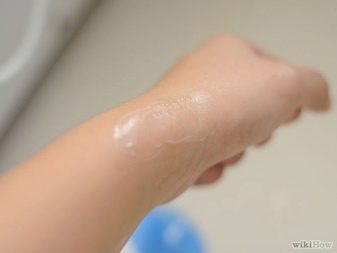
Many different cosmetic products that have an amazing effect on the condition of the skin, can be made at home from leftover food.
- Coffee. Coffee beans ground with different attachments are perfect for scrubs. The larger particles exfoliate the skin more strongly, while the smaller ones are softer. Caffeine is an excellent antioxidant that tones and improves blood circulation. In order for the scrub with coffee grounds to be convenient to use, it must be mixed with thick milk for washing or ordinary sour cream.
- Cereals. Regular oatmeal provides gentle cleaning and excellent lifting effect. It contains B vitamins, amino acids and various trace elements that nourish and nourish the skin. Grind the flakes in a blender and add to the pureed strawberries, raspberries or currants. The gruel is applied to the face in the form of a mask and washed off with gentle massaging movements.
If you add a few tablespoons of sugar to the mask, you will get an excellent peeling, and orange essential oil will allow you to get additional aromatherapy.
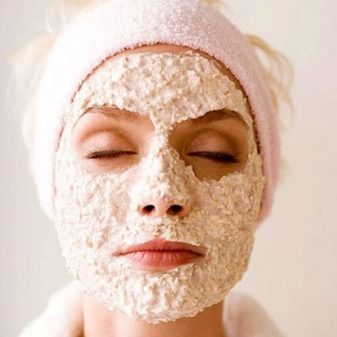
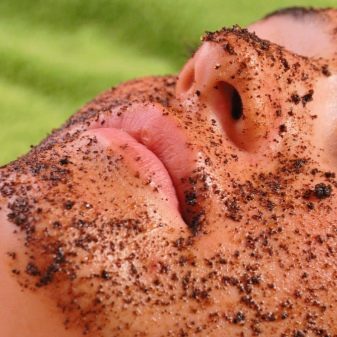
- Gelatin and activated carbon. The predecessor of the now famous "black mask" was the usual mixture of two tablespoons of gelatin with three tablets of activated carbon and 100 ml of hot water. The mixture is thoroughly mixed until the gelatin is completely dissolved and applied to the T-zone. It is necessary to keep such a mask on the face for at least 15-20 minutes before hardening, after which it can be removed like a film by pulling from one edge.
- Clay. For home cleansing of the face, ordinary masks made of colored clay, which are sold both in cosmetic stores and in pharmacies, are perfect. White clay works well to reduce skin pigmentation, black clay cleanses and soothes irritated skin. To get a ready-made mask, you just need to add warm water to the powder in the proportion indicated on the package. However, to enhance the effect, you can use various additional ingredients instead of water or with it. For sensitive and dry skin, sour cream and vegetable oils (sunflower, olive, avocado oil) are perfect. For owners of oily skin, supplements in the form of soda or sea salt are suitable. Aging skin loves nourishing macadamia or olive oil.
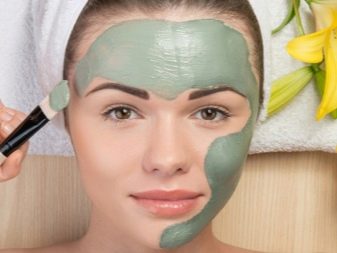
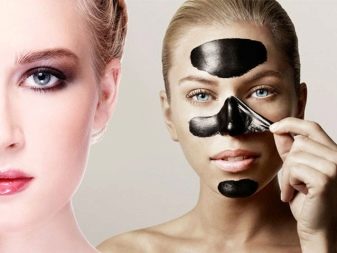
In addition to the above, you can find a huge number of different recipes that include chamomile, kefir and milk, honey, aspirin tablets, various berries and fruits. The mask, which includes the bodyag, has an exceptional healing effect. Due to it, deep cleansing has practically no consequences in the form of irritation and redness. Tea tree oil can be added to hot water to steam your face to reduce the likelihood of acne breakouts. Coniferous tree oil will provide an additional healing effect on the respiratory tract, while lemon, orange or grapefruit oils will cheer you up and help reduce excessive appetite.
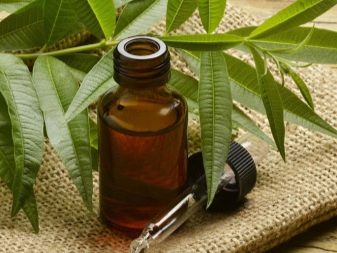
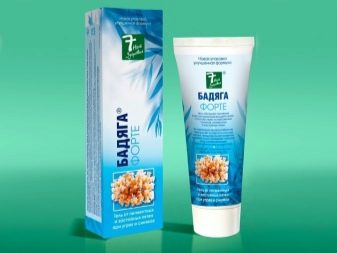
The most common mistakes when doing home cleaning are the following:
- face cleansing is carried out, despite contraindications;
- after heating, the water is not allowed to cool down, and the dermis is burned by steam;
- attempts to scrub the skin of the lower and upper eyelids;
- attempts to squeeze out deep pollution of the nasolabial triangle;
- applying decorative cosmetics immediately after the procedure.
When caring for your skin, it is important to pay attention not only to its appearance, but also to its state of health. And sick people do not have healthy skin, therefore, in order to achieve a result, it is first of all necessary to lead a correct lifestyle and minimize stress in the family and at work. More gentle options give a short-term effect, and deep cleansing lasts longer, but has a stronger effect on the skin, and is an order of magnitude higher.
Whichever way of getting rid of dirt and blackheads is chosen, the main thing is to observe safety precautions and find a professional. You should not unconsciously entrust yourself to advertising, it is best to see the effectiveness of a particular procedure on those people who have already performed it.

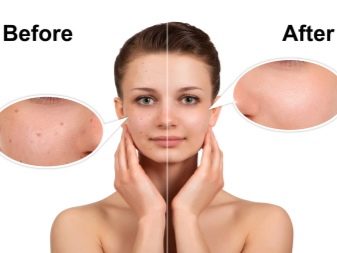
For information on how to cleanse your face from blackheads and acne, see the next video.








